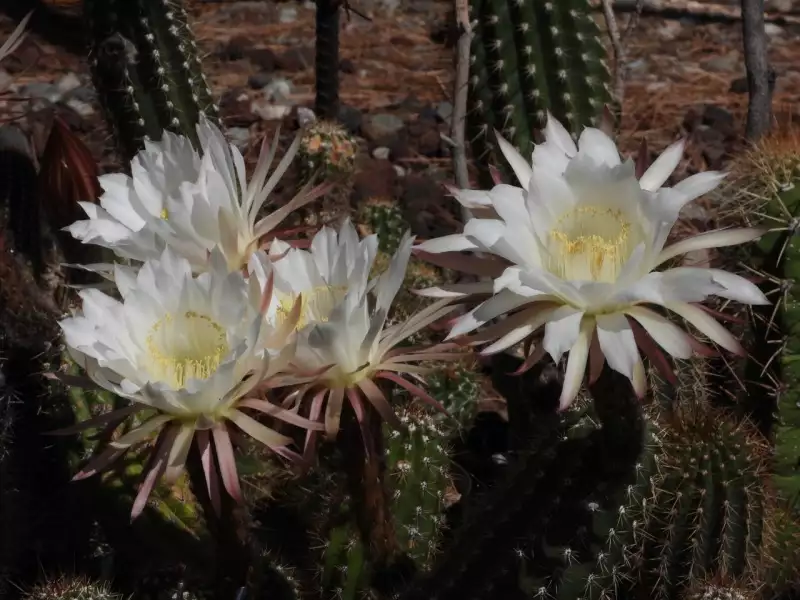Trichocereus purpureopilosus 8/25/21
This is a super-reliable late summer/early fall blooming species. As I write (9/30/21), the last 3 flowers in this year's blooming are starting to close. My iPhoto files have it that July to middle-of October pretty much defines the flowering time. Because it's gotten much cooler lately, those 3 flowers have opened on two successive days, rather than late summer's one day. The main stem of the plants you're seeing is a bit longer than a foot (30 cm). This dimension is a matter of pot size. All plants of this species acquire several too many basal offsets. Both the offsets and the main stem may flower. One of my plants some years ago had 15 flowers over a space of six weeks. I once saw five flowers open on one plant.
I did some internet reading and found that this is a popular species to hybridize, so I'll start doing this more actively. Maybe I'll even keep reliable written records! The problem that I see is that all of the Trichocereus/Echinopsis in my collection are pretty much done flowering well before this species flowers. I can, of course just freeze the pollen from the early blooming plants, but I think I need to go to lower temp that 0 F (-18 C) to have a better shot at preserving pollen in a viable state. I could use Dry Ice in a thermos to get down to -80 C. The expense here isn't great. I think Dry Ice is about $2/lb ($2/454 g) at my local super market. I can afford $2 a day, no problem. Having a cheap (aka "free") source of liquid nitrogen would be ideal (-196 C; -320 F). If it's possible (it is!) to keep human embryos alive for years and years at liquid nitrogen temperatures, doing the same for cactus pollen should be just as possible. (Analogy reasoning does fail sometimes.) (105/112)
<<Prev
Index
Next>>

